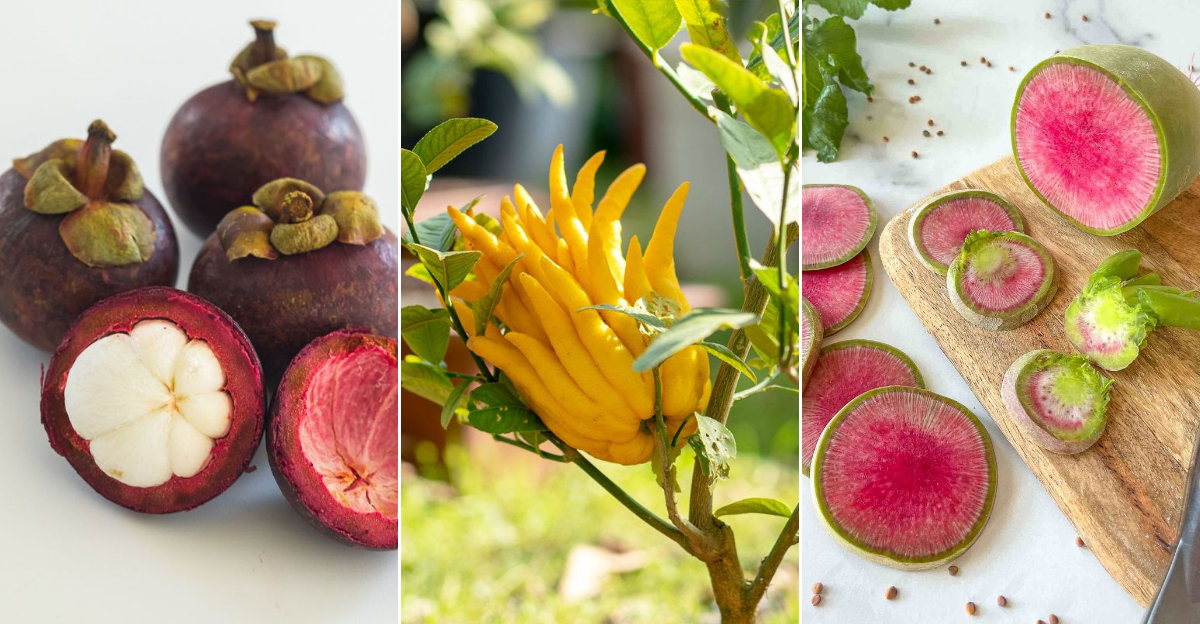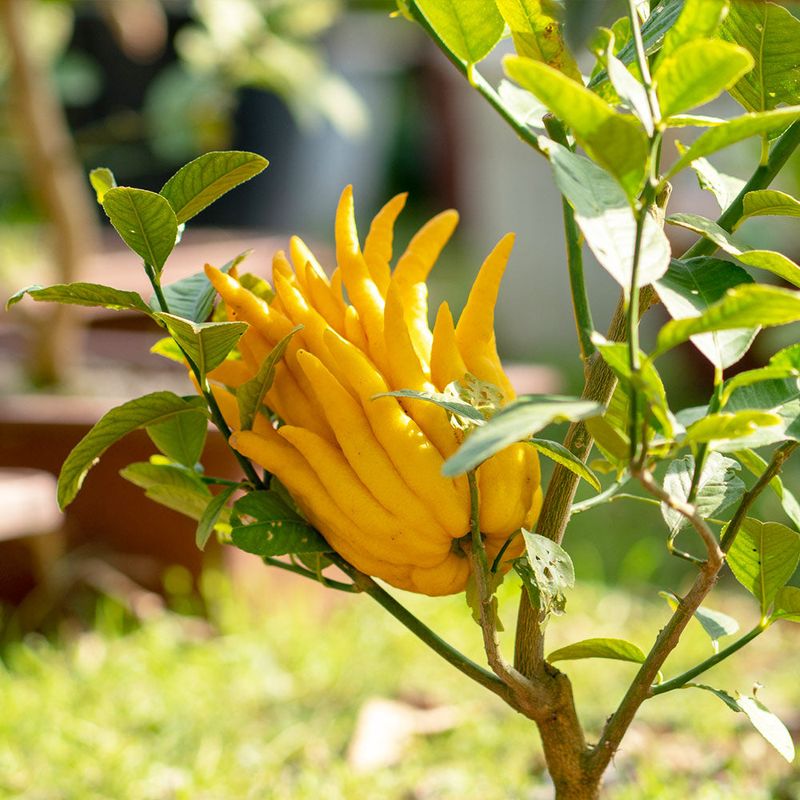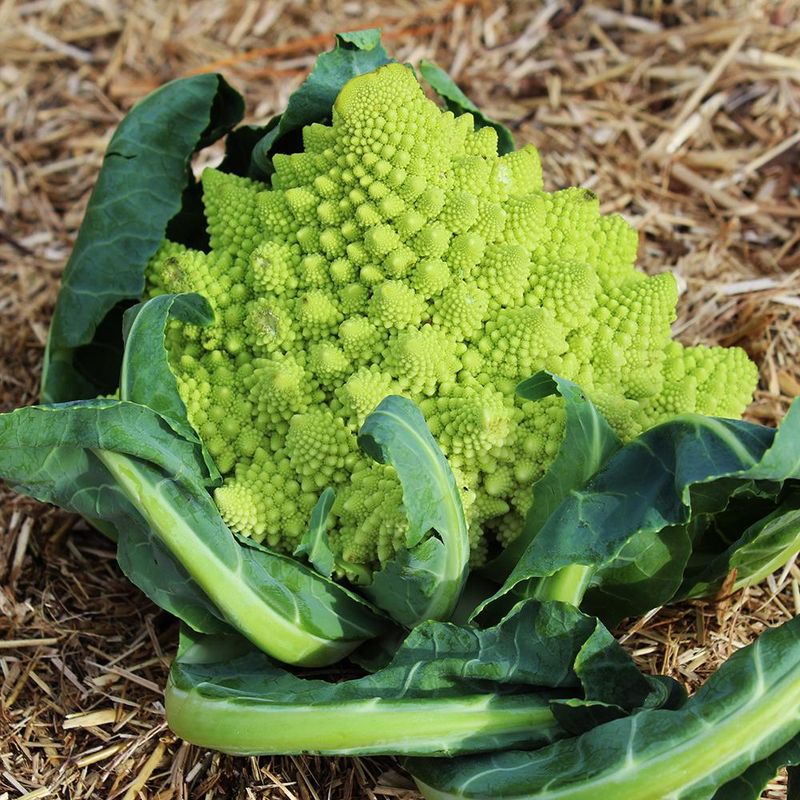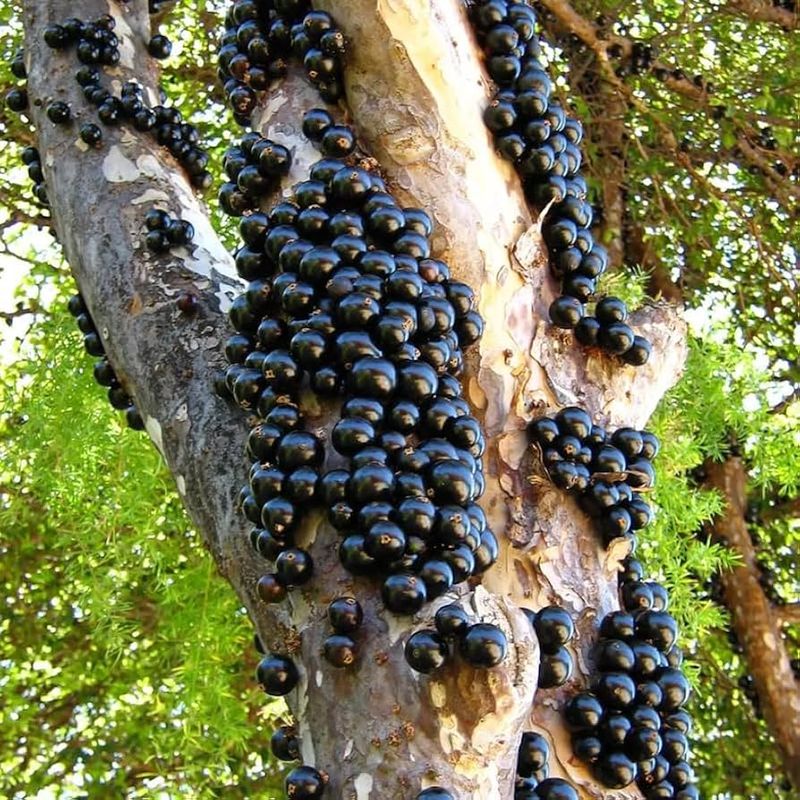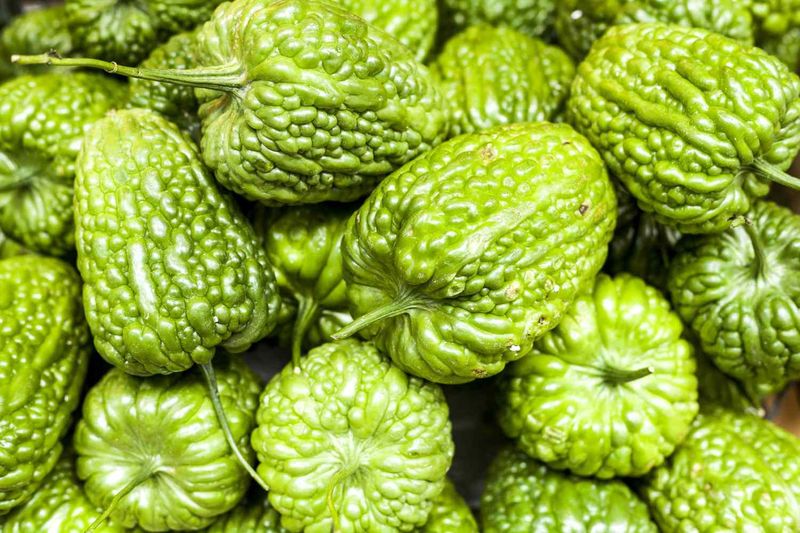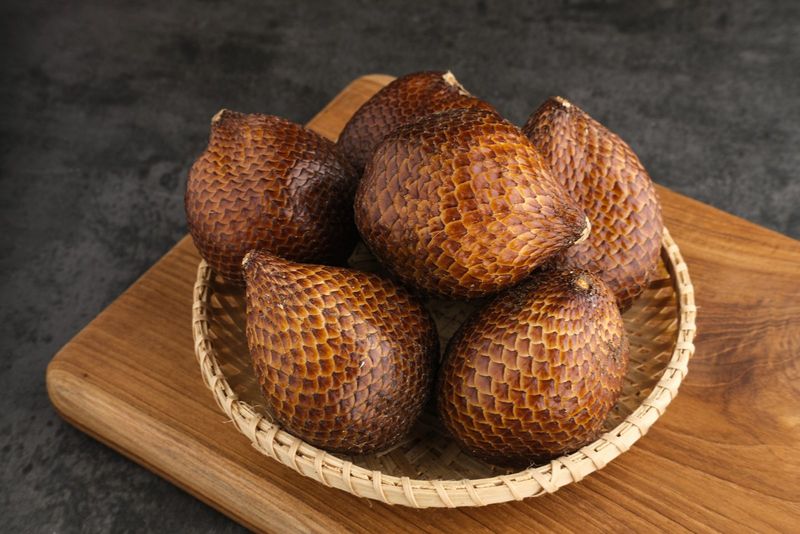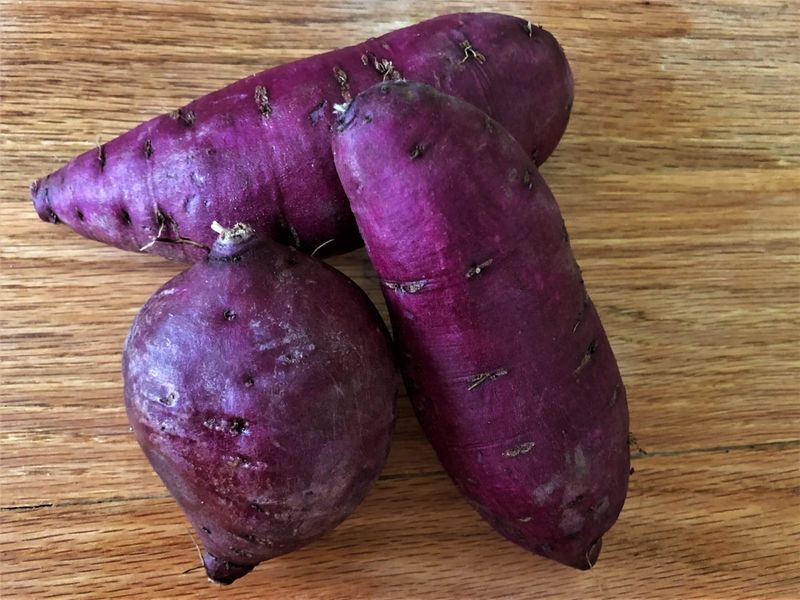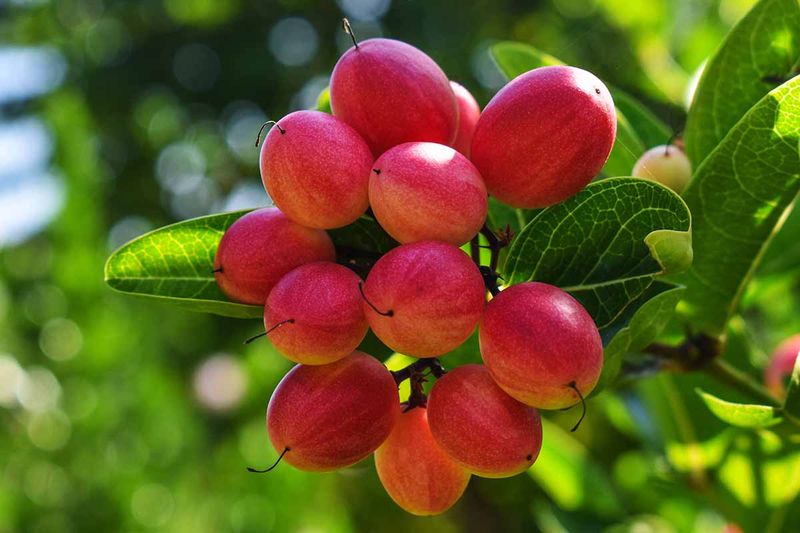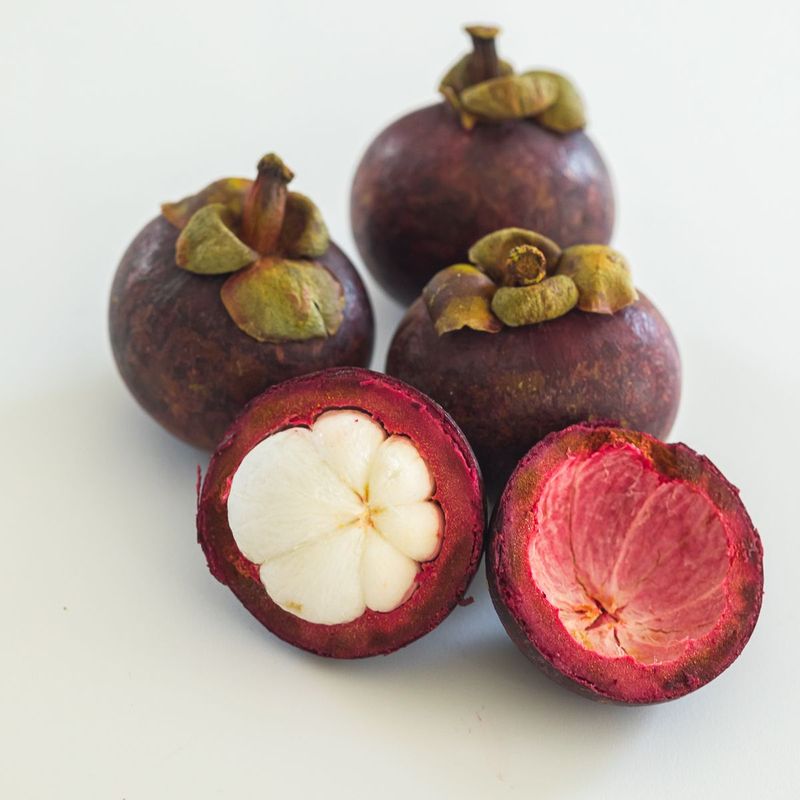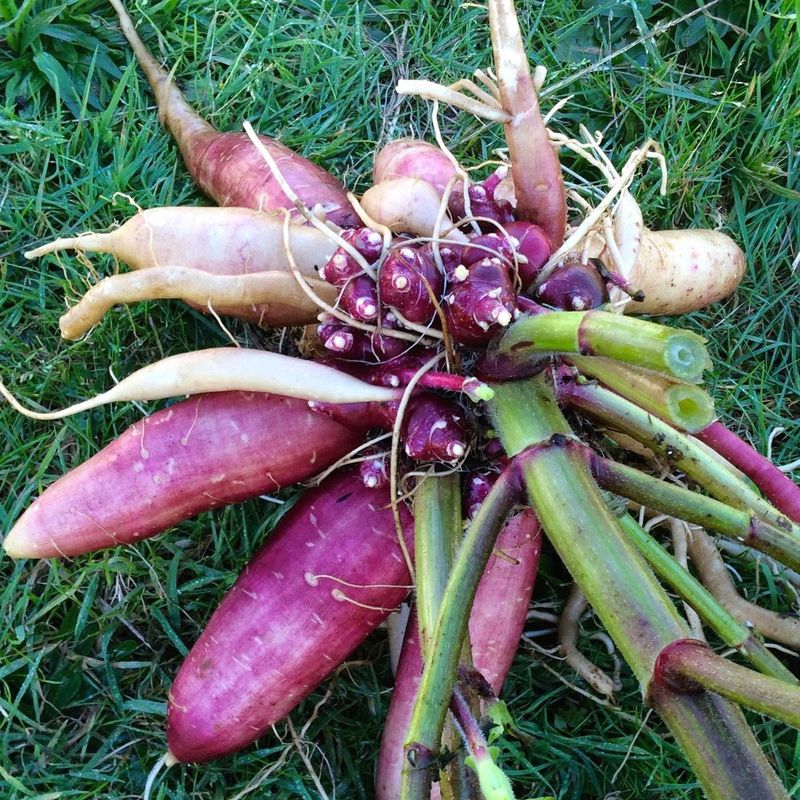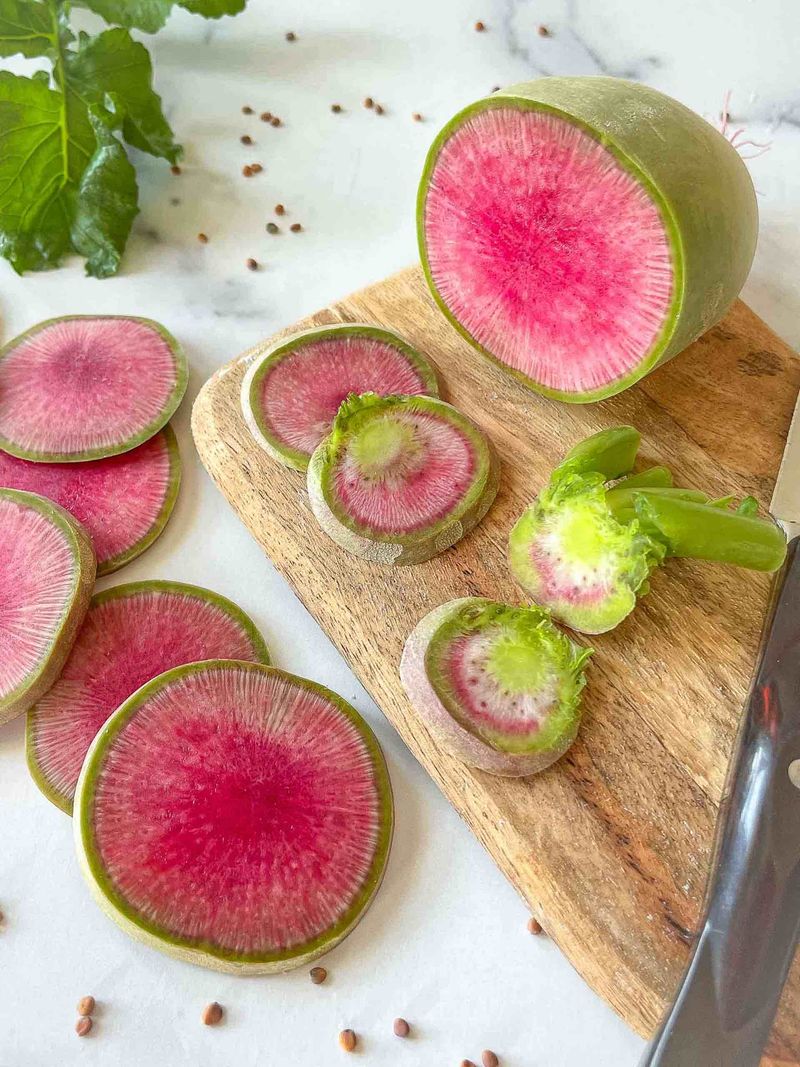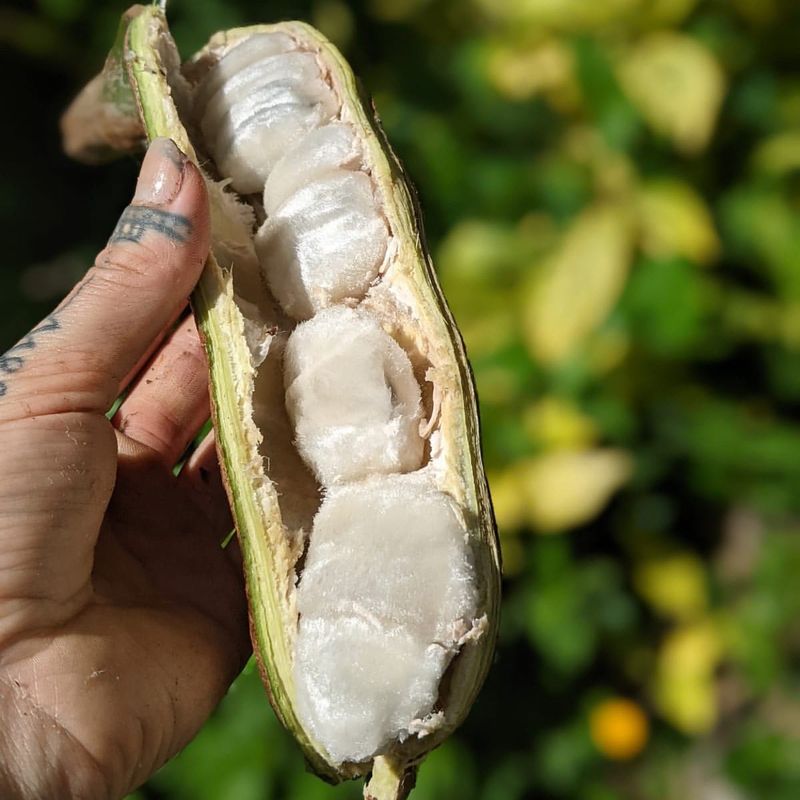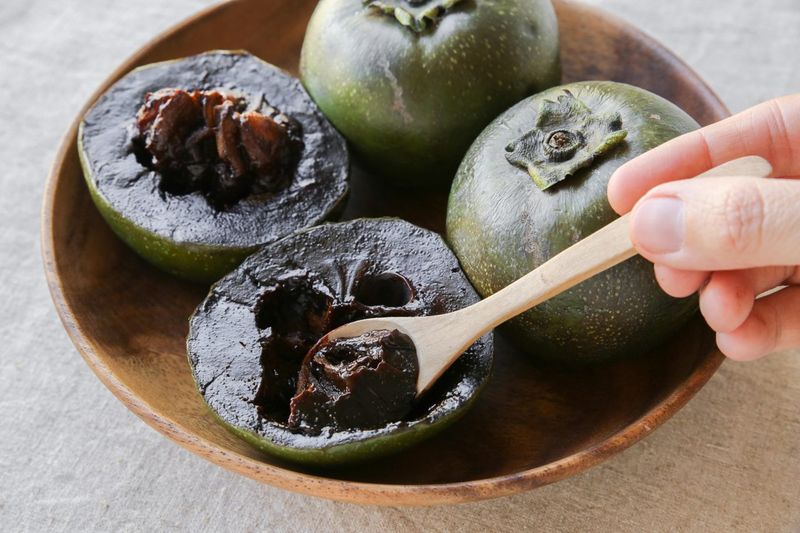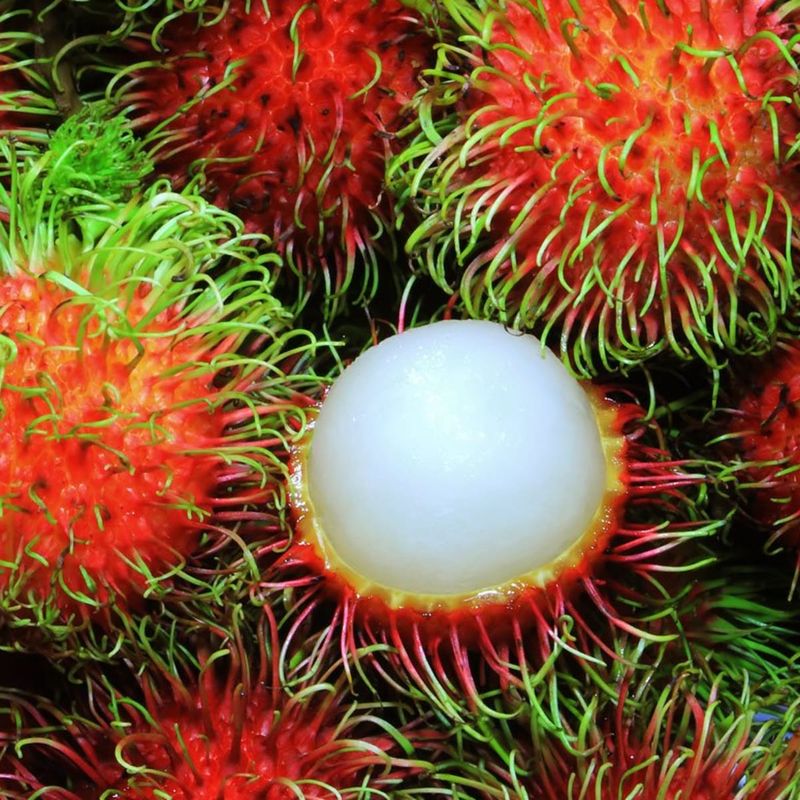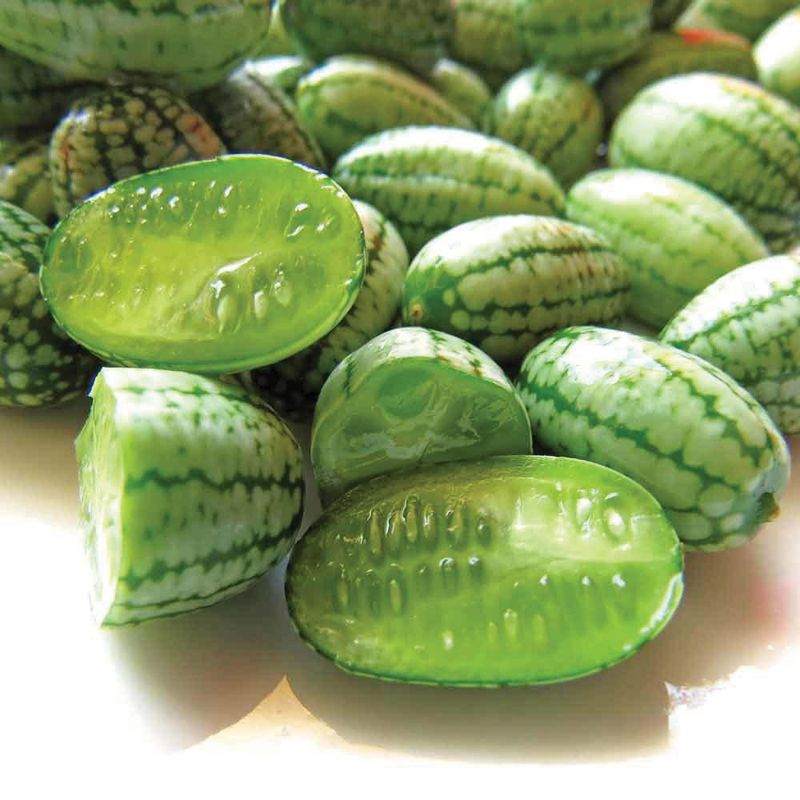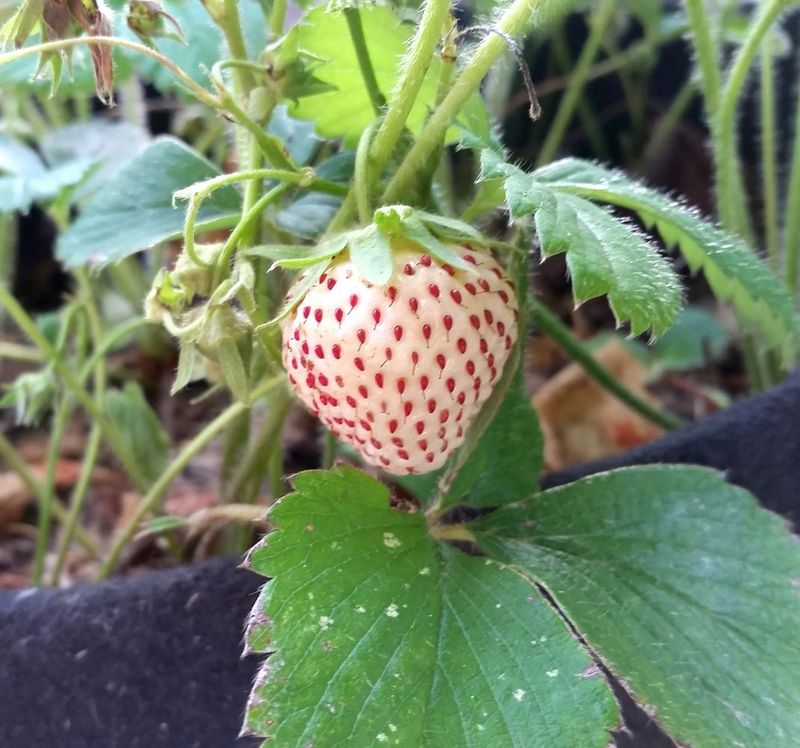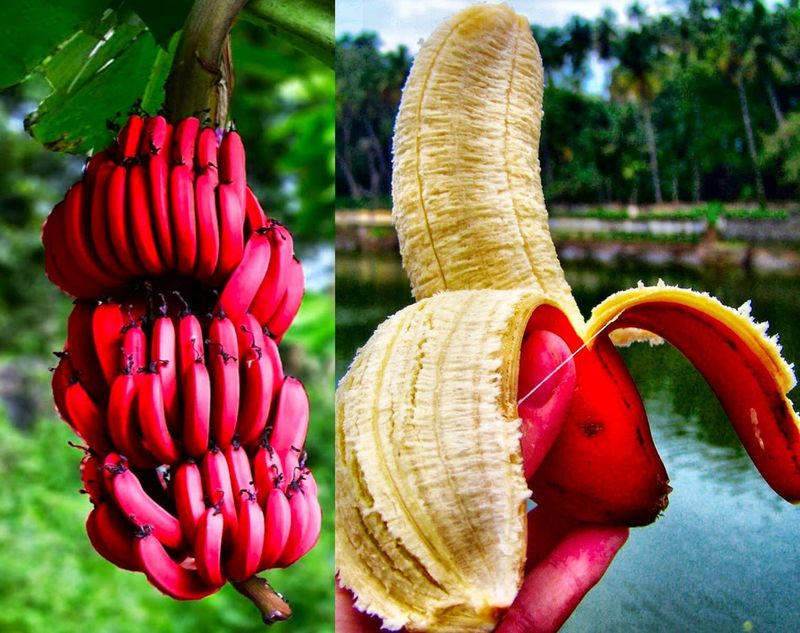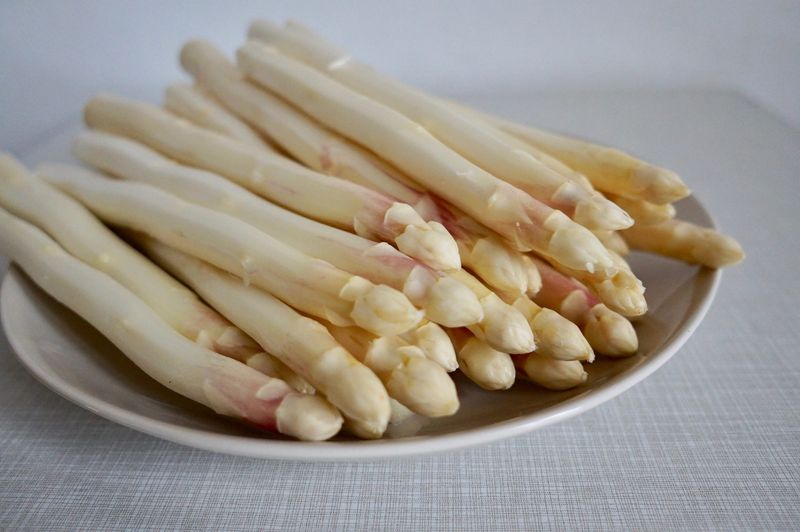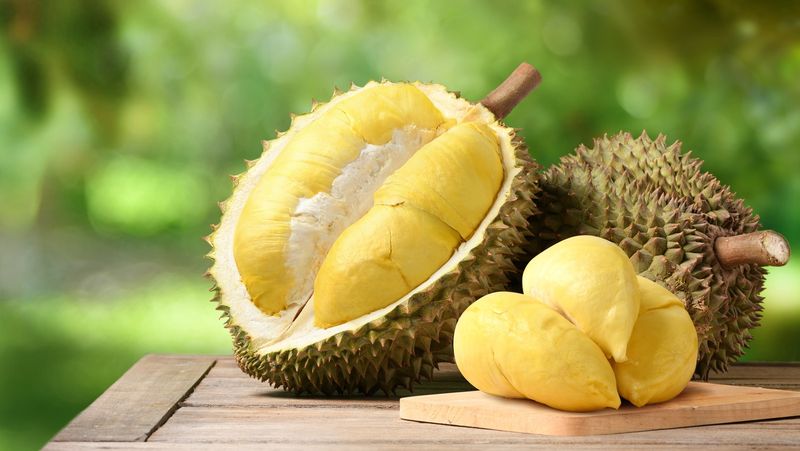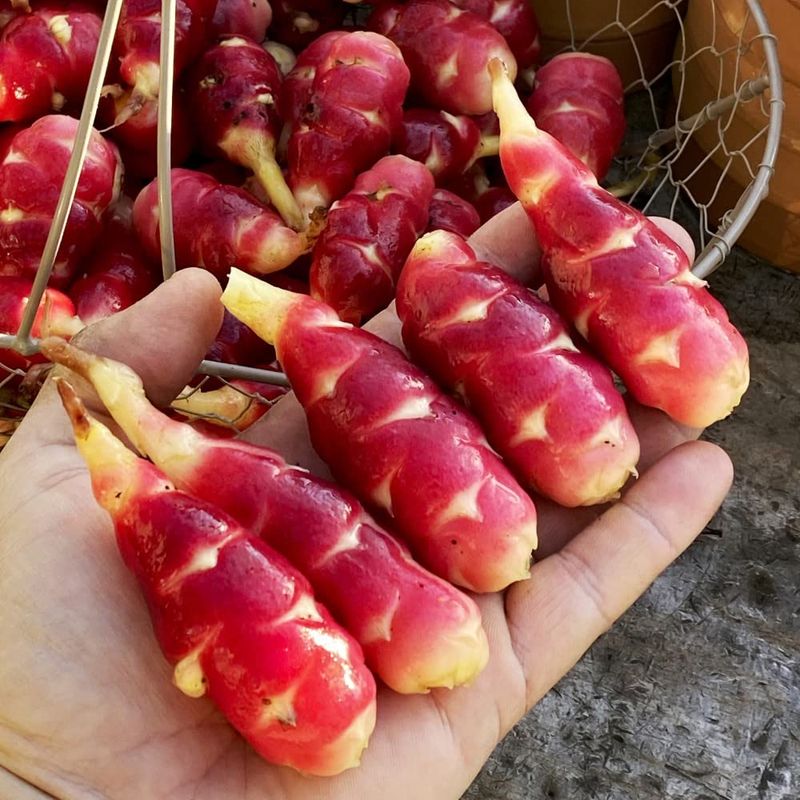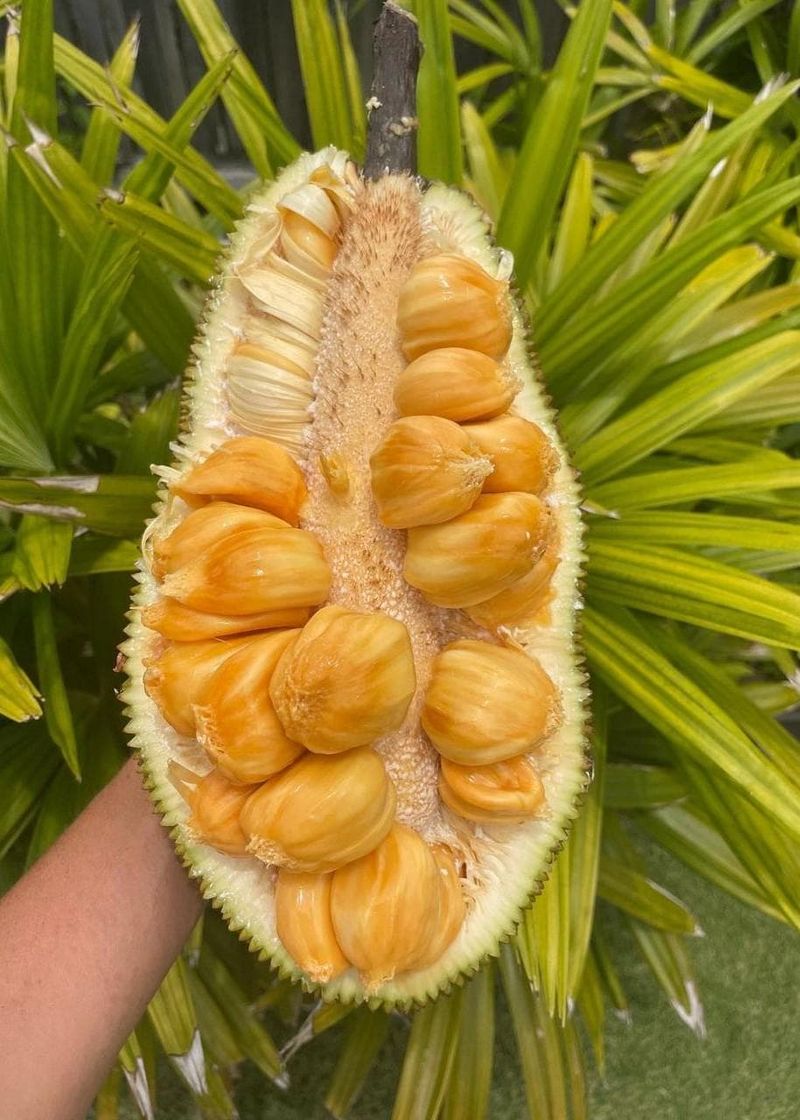Explore the world of extraordinary fruits and vegetables with our stunning collection of 20 unusual varieties. Each one offers a unique taste, appearance, or growing habit that sets it apart from the common produce found in grocery stores.
From visually captivating patterns to flavors that challenge your taste buds, these fruits and vegetables are sure to surprise and intrigue.
Whether you’re a daring foodie or simply curious, delve into this list to discover the hidden gems of the plant kingdom, and perhaps even find new favorites to add to your culinary repertoire.
1. Buddha’s Hand
Buddha’s Hand is a mesmerizing citrus fruit known for its unique, hand-like appearance with elongated, finger-like segments. It’s not your typical citrus, lacking juicy pulp. Instead, it offers a strong lemon fragrance, making it perfect for zesting or as a natural air freshener.
Imagine slicing through its bright yellow peel to release a burst of citrus aroma. Though not commonly eaten raw, its zest is cherished in culinary and perfumery worlds. Picture these vibrant segments beautifully arranged in a fruit bowl, adding an exotic touch to your kitchen decor.
2. Romanesco Broccoli
Romanesco Broccoli is a visual masterpiece of the vegetable world. Its striking, spiral fractal pattern is not only a treat for the eyes but also a testament to nature’s mathematical beauty.
The bright green, tightly packed florets form perfect logarithmic spirals, captivating anyone who gazes upon it. Aside from its looks, Romanesco offers a taste similar to broccoli but with a nuttier flavor.
It holds its shape well when cooked, making it a delightful addition to stir-fries and salads. Imagine this stunning vegetable as the centerpiece of your next meal.
3. Jabuticaba
Jabuticaba is a fascinating Brazilian fruit that defies conventional growth patterns by sprouting directly on the trunk and branches of its tree. The round, deep purple fruits resemble grapes but with a thicker skin.
As you bite into one, expect a burst of sweet, tart flavor with a hint of floral notes. It’s a tropical delight often enjoyed fresh, in jams, or fermented into wine.
Picture a tree adorned with clusters of these jewel-like fruits, offering a unique visual and gastronomic experience in your own backyard garden.
4. Chayote
Chayote, a staple in Latin American cuisine, is a versatile squash with a mild flavor reminiscent of cucumber. Its pale green, wrinkled skin and pear-like shape make it easily recognizable.
When cooked, it absorbs surrounding flavors, making it an excellent addition to stews and sautés. Raw, it can be thinly sliced for salads, offering a crisp texture.
Imagine incorporating Chayote into your next dish, adding a nutritional boost with its rich vitamin content. It’s not just a vegetable; it’s a canvas for culinary creativity, adaptable to various cooking methods.
5. Salak (Snake Fruit)
Salak, commonly known as Snake Fruit, hails from Southeast Asia and is easily identified by its reddish-brown, scaly skin. Peeling it away reveals a firm, cream-colored flesh with a unique sweet-tart flavor, often compared to a mix of apples and pineapples.
Its crunchy texture makes it a refreshing snack, perfect for adventurous eaters. Imagine holding this intriguing fruit, feeling its scaly texture, and taking a bite to experience its distinct taste.
Whether eaten fresh or used in desserts, Salak offers a delightful surprise, both visually and gastronomically.
6. Purple Sweet Potato
The Purple Sweet Potato stands out not only for its vibrant color but also for its exceptional taste. Unlike regular sweet potatoes, this variety boasts a deep purple flesh rich in antioxidants.
Its flavor is sweet with subtle nutty undertones, making it a versatile ingredient in both savory and sweet dishes. Imagine baking these potatoes to enhance their natural sweetness or mashing them for a visually stunning side dish.
The striking color adds an artistic touch to any plate, encouraging culinary experimentation while providing nutritional benefits.
7. Miracle Fruit
Miracle Fruit, small in size but big in impact, is known for its ability to transform sour tastes into sweet ones. This red berry originates from West Africa and has been intriguing taste adventurers worldwide.
Imagine eating a lemon and experiencing an unexpected sweetness; that’s the magic of Miracle Fruit. It temporarily alters taste receptors, offering a unique sensory experience.
Culinary enthusiasts use it for “flavor-tripping” parties, allowing guests to savor sour foods in a new way. These berries, though tiny, open a world of playful culinary experimentation, blending science and gastronomy.
8. Mangosteen
Mangosteen, often heralded as the “Queen of Fruits,” boasts a thick, purple rind encasing juicy, sweet white segments.
Native to Southeast Asia, its flavor is a harmonious blend of sweetness and tang, often described as a mix of peach and pineapple. The fruit is as delightful to look at as it is to eat, with a shape that resembles a small, elegant orb.
Picture halving one to reveal the luscious segments inside, ready to be savored. Mangosteen not only offers a tropical escape in flavor but also a visual treat with its regal appearance.
9. Yacon
Yacon, a root vegetable native to the Andes, surprises many with its crisp, juicy flesh reminiscent of an apple and watermelon hybrid. Its sweet, refreshing taste makes it a delightful snack, whether eaten raw or added to salads.
Picture slicing into this light brown-skinned root to reveal its translucent interior, ready to be enjoyed. Yacon is not only delicious but also rich in prebiotic fiber, supporting digestive health.
This versatile vegetable can also be cooked, offering a subtle sweetness to various dishes, making it a wonderful addition to any culinary repertoire.
10. Watermelon Radish
Watermelon Radish, a feast for the eyes and palate, hides its vibrant beauty beneath a plain exterior. Once sliced open, it reveals a stunning pink center that contrasts with its white-green exterior.
Its flavor is mildly peppery, with a hint of sweetness, adding a colorful and flavorful punch to dishes. Imagine thin slices layered in a salad or as a garnish, elevating any dish with visual appeal.
This radish is not just a pretty face; it’s packed with nutrients and offers a delightful crunch, making it a favorite among chefs and home cooks alike.
11. Ice Cream Bean
Ice Cream Bean, a curious legume from tropical regions, hides a sweet surprise within its long, green pod. When opened, it reveals fluffy white pulp that tastes remarkably like vanilla ice cream.
This unique flavor makes it a favorite among those seeking a natural, guilt-free dessert option. Imagine plucking a pod from a tree and enjoying the sweet, creamy taste of its pulp.
Its refreshing flavor and texture make it a delightful treat, perfect for warm climates. The fun of discovering this tropical delight adds an element of surprise to any culinary adventure.
12. Black Sapote (Chocolate Pudding Fruit)
Black Sapote, aptly nicknamed the Chocolate Pudding Fruit, offers a surprising treat for chocolate lovers. When ripe, its dark, creamy flesh mimics the texture and taste of chocolate pudding, offering a unique, natural dessert.
Imagine scooping into this fruit with a spoon, savoring the rich, chocolate-like flavor without the guilt.
Native to Central America, Black Sapote is often used in smoothies and desserts, making it a versatile ingredient. Its intriguing taste and texture make it a sought-after delicacy for those seeking something different yet deliciously satisfying.
13. Rambutan
Rambutan, with its hairy red exterior, instantly catches the eye. Native to Southeast Asia, this fruit is similar to lychee but offers its own unique twist on flavor and texture.
Peeling away the spiky shell reveals a juicy, translucent white flesh that’s sweet with a subtle hint of floral notes. Imagine biting into this tropical delight, the juicy flesh providing a refreshing burst of flavor.
Rambutan is not only delicious but also visually intriguing, making it a popular choice for those exploring exotic fruits. Its playful appearance and delightful taste offer a delightful experience.
14. Cucamelon (Mexican Sour Gherkin)
Cucamelon, often called Mexican Sour Gherkin, is a delightful miniature fruit that looks like a tiny watermelon but tastes like a tangy cucumber. Its small size and unique appearance make it a fun addition to any dish.
Imagine popping one into your mouth, the crisp texture giving way to a refreshing, slightly sour taste. Often used in salads or pickled, Cucamelons add a bit of whimsy and flavor to culinary creations.
These charming fruits bring a playful touch to the kitchen and are perfect for adventurous eaters looking to surprise their taste buds.
15. Pineberry
Pineberry, with its striking appearance, offers an unexpected twist on the classic strawberry. Its white flesh dotted with red seeds hints at its unique flavor—a delightful combination of strawberry and pineapple.
Imagine biting into this fruit, experiencing the sweet, tropical taste that defies its appearance. Pineberries are not only a visual novelty but also a treat for the taste buds, providing a refreshing change from traditional strawberries.
They add an exotic flair to any fruit salad or dessert, making them a favorite among those seeking something both different and deliciously satisfying.
16. Red Banana
Red Bananas are a vibrant twist on the familiar fruit, boasting a reddish-purple skin that encases sweet, creamy flesh.
Their flavor is sweeter and more aromatic than the common banana, with subtle raspberry notes. Imagine peeling one of these bananas and enjoying the rich, satisfying taste that follows. They’re perfect for snacking or adding to smoothies and desserts.
Red Bananas not only offer a colorful aesthetic but also a flavorful experience, making them a delightful alternative to their yellow counterparts. Their unique taste and appearance make them a standout in the fruit world.
17. White Asparagus
White Asparagus, a culinary delicacy, differs greatly from its green counterpart. Grown without sunlight, it develops a milder taste and tender texture. Imagine savoring its subtle flavor, enhanced with a hint of nutty sweetness.
Often steamed or grilled, it’s served as a gourmet side dish. Picture a plate elegantly arranged with these pale spears, offering a visual and gastronomic treat.
White Asparagus is celebrated in European cuisine, particularly during its short spring season. Its unique growing process and refined taste make it a sought-after ingredient for discerning palates.
18. Durian
Durian, known as the “King of Fruits,” is famous for its divisive aroma and rich, custard-like texture. Revered in Southeast Asia, its flavor is a complex mix of sweet and savory, often compared to a blend of almonds, cheese, and caramel.
Imagine cracking open its spiky shell to reveal the creamy, yellow flesh inside. Despite its strong odor, many find its taste delightful, making it a must-try for adventurous food lovers.
Durian’s unique characteristics have earned it both fans and detractors, but it remains an iconic symbol of culinary boldness and exploration.
19. Oca (New Zealand Yam)
Oca, also known as New Zealand Yam, is a vibrant root vegetable available in a rainbow of colors—pink, yellow, and purple. Its crisp texture and tangy, lemony flavor make it a unique addition to any dish.
Imagine roasting these colorful tubers, their flavor intensifying and their texture remaining satisfyingly firm. Oca can be boiled, baked, or even eaten raw, offering versatility in preparation.
This nutritious tuber is not only a feast for the eyes but also a delight for the palate, making it a favorite among those looking to add variety to their meals.
20. Chempedak
Chempedak, a close relative of jackfruit, offers an exotic twist with its sweet, aromatic flavor and custard-like texture. Native to Southeast Asia, this fruit is celebrated for its rich, tropical taste, reminiscent of banana, mango, and durian.
Imagine opening its thick, green skin to uncover the soft, fragrant flesh inside. It’s a versatile fruit, enjoyed fresh or deep-fried in local delicacies.
Chempedak not only captivates with its bold flavors but also with its unique texture, providing an unforgettable culinary experience for those eager to explore beyond conventional fruit offerings.
